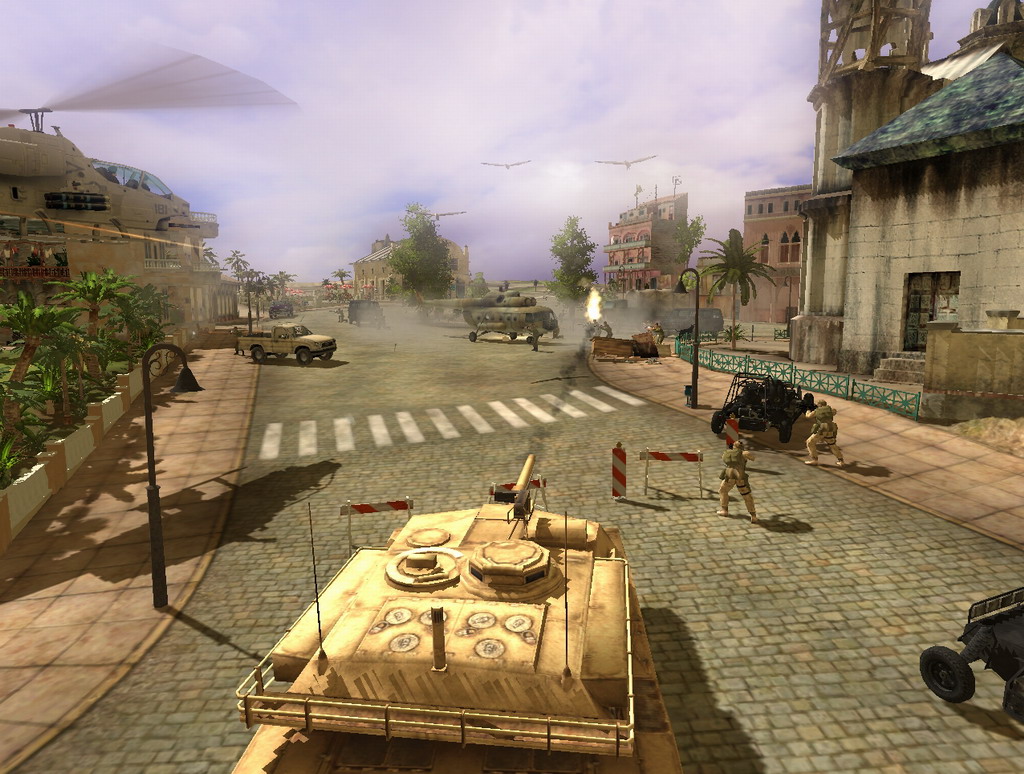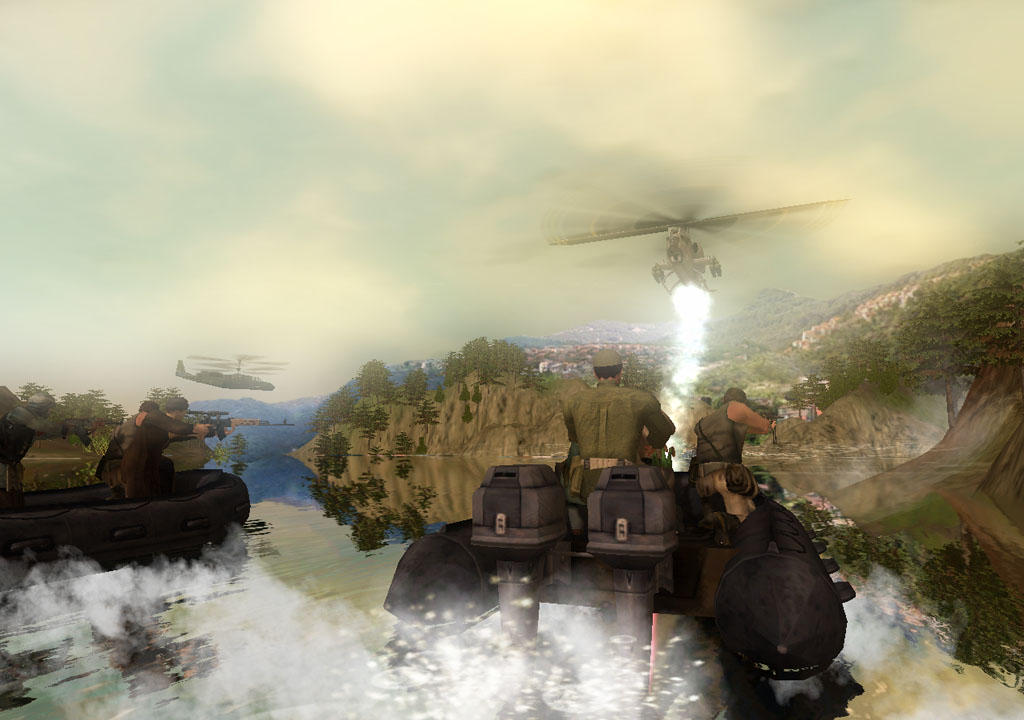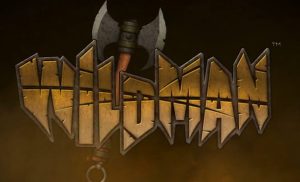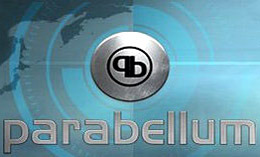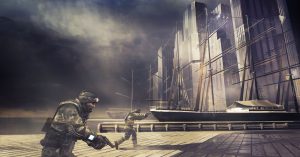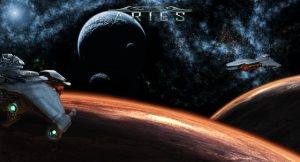Ghost Wars (later named Field Ops) is a cancelled strategy shooter that was in development around 2004 by Digital Reality (mostly known for Imperium Galactica and Sine Mora), planned to be published in 2006 on PC by Hip Interactive. The game was quite ambitious for its genre, as you would have been able to play it as a traditional real-time strategy game or impersonate each soldier in your unit to play it as a first / third person shooter.
“Based on the Government Special Operations Group, “Ghost Wars” takes players into the clandestine and secret war against terrorism. Players take control of air, land and sea units of an Elite Special Forces group across multiple top secret missions. With the graphical quality of a first person shooter, “Ghost Wars” will offer gamers the most accurate depiction of modern day warfare to date.
Through Battlefield View, “Ghost Wars” brings the theatre of war to life. Gamers are not only tested on their strategic senses, but also on their ability to react quickly under enemy fire by directly controlling individual units. By setting up, equipping and planning troops’ activities, gamers will need to utilize state-of-the art weapons and technology to defeat terrorist networks.”
The game was also playable at E3 2005, GameSpot published some favorable comments on the demo:
“You’ll have the typical type of units, including soldiers, tanks, helicopters, and such. However, what makes Ghost Wars unique is how you control them. While you can just use the typical kind of point-and-click movement, you can also select a specific unit and zoom the camera in to take its viewpoint. If you choose a soldier, you’ll go into first person, and if you pick a vehicle, you’ll go to third person. From there, you can control that unit manually, attacking whatever you like. Soldiers can also get into parked vehicles on the field and drive them.”
“Units in the game will be upgradable in a number of ways, letting you specifically level up individual units to improve their performance on the battlefield. And you’ll need to level up, because Digital Reality is endeavoring to make the opponent AI in the game quite challenging. AI units will run for cover and hide inside buildings, meaning you’ll have to bring in your tanks and choppers to take those buildings down. And boy, can you. Though not all the deformable objects were in, the developers showed us quite a number of big-time building and vehicle explosions that looked pretty impressive.”
While Ghost Wars looked promising, Hip Interactive closed for bankruptcy in late 2005. The game was canned, with many more of their projects, such as “Call of Cthulhu: Destiny’s End” and “George Romero’s City of the Dead”.
Nonetheless, following the cancellation of Ghost Wars, former members from Hip Interactive Europe formed a new entity named Freeze Interactive to ensure the development of the game, rebranded as Field Ops, and still developed by Digital Reality, in 2006:
“Swiss-based publishing house Freeze Interactive, and developer Digital Reality are proud to announce Field Ops the first PC Real-Time-Strategy Shooter !
Field Ops brings together, in a unique presentation, the two favourites genres of PC gamers;Real-Time-Strategy and First-Person Shooter.
Field Ops is the perfect mix between strategy and fast-paced military action. Move into the fascinating world of anti-terrorism and manage every aspect of gameplay from strategic planning to taking out the main bad guy with your sniper rifle.
What Field Ops brings, to the genre and to games in general, is a genuine revolution that combines immersion and strategic thinking.”
Game features:
- 5 Unique locations
- More than 8 different classes per side
- First-Person shooter AAA quality graphics
- True to life Physics engine
- Immersive and exciting multiplayer modes featuring a worldwide ranking system
- Real vehicles and weapons for the most authentic Special Forces experience
- Fight on the ground, in the air and over water
- Motion-captured animations for the most realistic experience ever
- Tactical A.I. allowing for exciting gameplay in both RTS and FPS views
The game was showed at the Game Convention 2006, where Gamespot managed to write a preview for the multiplayer mode:
“The game features three different multiplayer modes that will be familiar to fans of FPS games, namely VIP rescue, bomb run, and conquest. Before you set up a multiplayer game, you have to create a customised team squad, built using an allocation of multiplayer points that you can spend on different skilled individuals. In the demo that we saw, we could choose from medics, snipers, and special-operative soldiers, although more classes will be available in the full game.”
“With one team playing as US counterterrorists and one as the terrorists, the conquest game requires you to capture key places on the map in order to take over, although killing off all of the opposing team will also earn victory for the map. As in most strategy games, units can be deployed individually or in groups. Fog of war affects the battlefield in multiplayer, so you can’t monitor your opponent’s movements until your units actually see them firsthand.”
“While you can leave the killing to the AI, it’s much more effective to control the engaged units yourself, especially if you can perform headshots. While the combination could ultimately turn out to be a gimmick, combining your skills in the two genres is an essential part of the gameplay. Though you could stick to one discipline, you’ll ultimately suffer unless you embrace the advantages that each perspective has to offer.”
The full game will feature online and LAN play for up to six people, and because the game scores you on your losses and victories, you should be able to match up to players of a similar ability. A number of different character classes will be added that we didn’t get to see in the demo, including heavy machine gunners, technicians, engineers, and demolition experts.
The mix of two complementary genres in Field Ops makes it an interesting proposition, especially for fans of the two styles. While the multiplayer demo had its share of problems at this stage, such as slowdown in the first-person mode and a lack of playable classes, there’s plenty of time for Freeze to tidy it up before the Q1 2007 release.”
In the beginning of 2007, Gamespot again was also able to write a preview on the campaign:
“The story goes that a failed coup d’etat on the island of Cuba has split the country in two, and Santiago de Cuba has become the new base for the rebels. Our task in the mission was to head over to a checkpoint outside a ruined church and sit tight while reinforcements made their way to us. Once that was accomplished, we were required to make our way over to the building that the rebel leader was holed up in and capture him by eliminating his troops.
The map itself is set out very much in the style of games like Ghost Recon Advanced Warfighter, with dusty, mazy streets and rebel soldiers hiding around every corner. To begin with, it’s tempting to try and play through the game by jumping into the shoes of a single soldier and clearing the way in first-person mode, only zooming back out every so often to get your medic to heal you.
We found that a much better tactic was to move our men around in the zoomed-out strategy setting, as it was much clearer to work out not just where to go but also which direction the bullets were coming from. Our small team could be split up into two-man designations of Alpha and Bravo, used as a group of four, or even as individuals when necessary, and it’s possible to jump into any soldier’s shoes in first-person mode at any time.
Just by looking at the map, we could tell that there were usually two or more routes through any part of the section of city we were in, and therefore it made sense to split the team in two to try and outflank the opposition where possible. However, although that sounds simple in principle, the game still currently suffers from some issues with the artificial intelligence. Because the use of cover is vital, the general behaviour of your soldiers is crucial, and at this point some of the pathfinding is a little out.
It’s clear there’s plenty of potential for Digital Reality to produce an absorbing, compelling action strategy game that will force you to think carefully about how to progress through each part of a level. As long as the AI gets a hefty polish, and the frame rate picks up, we’ll be looking forward to seeing more.”
However, it seems that more troubles occured for Field Ops after those presentations. Initially planned for a release in the beginning of 2007, the game simply disappeared without a trace, just like it’s publisher. A year after that, French website Jeuxvideopc.com received the confirmation by Take-Two Interactive, who had the rights to publish the game in French speaking countries, that it was definitely canceled without much information:
“Field Ops, Digital Reality’s FPS / STR, has just been canceled. Take-Two confirmed this information to us without giving us any further information. We therefore do not know the exact reasons for the cancellation of this project but the implementation of a complex gameplay is probably the cause.”
Oddly enough, a few months after that announcement, a small company named Atomic Motion, created by some developers from Digital Reality, revealed their first and only game: Raven Squad: Operation Hidden Dagger, which was eventually released in 2009, with a lots of concepts and design ideas taken from what was supposed to be Ghost Wars/Field Ops.
Videos:
Images:

